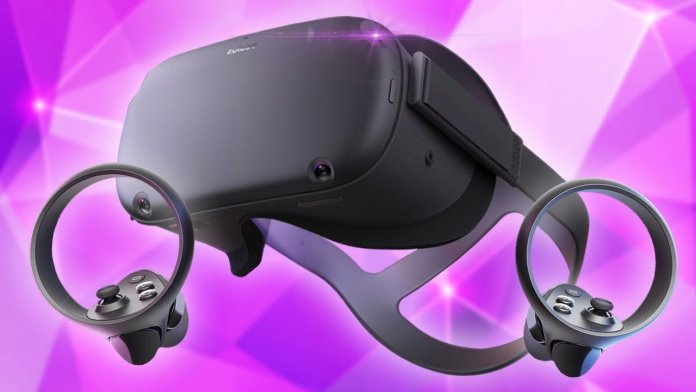Humanity is confidently moving towards virtual reality (let's leave to science fiction writers and moralists to decide whether this is good or bad). Interest in VR headsets saw another surge in March this year when Valve released the new game Half-Life: Alyx, and it hasn't waned since then.
Companies like Qualcomm (which makes the chips in most standalone VR headsets) are working on the next generation of chips. It looks like a wave of more powerful and modern virtual reality devices awaits us soon. Well, if you want to plunge into virtuality right now, then we are always ready to help! And let's talk about Top 10 VR headsets of 2020 from those presented on the Russian market. The rating is based on value for money and customer reviews.
10. Google Glass 3.0
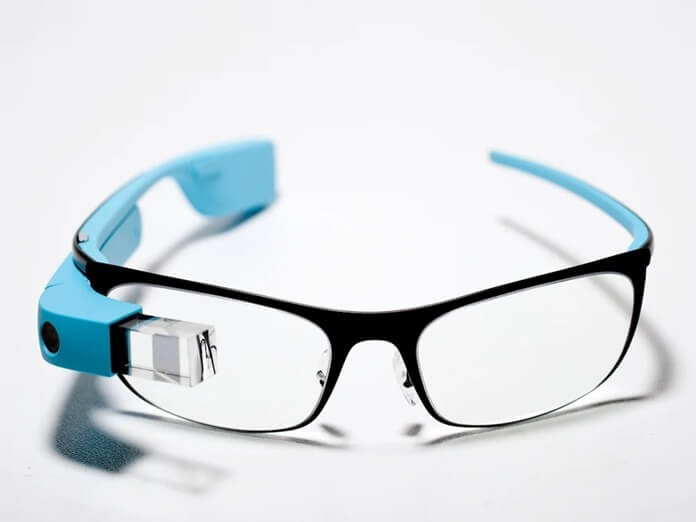
- purpose: for smartphones
- compatibility: Android, iOS
- general resolution: 640 × 360
- augmented reality
- built-in headphones
A futuristic product from Google opens the list of the best VR-glasses. It looks like it’s straight out of the pages of a science fiction novel. These VR glasses are very light and weigh about the same as a pair of regular glasses. True, there is one catch here - the lighter the product, the less opportunities to squeeze a voluminous battery into it. Therefore, Google Glass 3.0 can only withstand 4-5 hours of uninterrupted operation.
Plus, you cannot achieve pure virtualism from them, the maximum that they can do is project holograms into the surrounding space. With their help, you can view updates on social networks, use applications from Google and even record videos. Mostly, Google Glass 3.0 is purchased by futurism lovers and top managers, because with this gadget you can conveniently conduct presentations.
pros: truly innovative solution, futuristic design, originality of construction.
Minuses: limited use and high price.
9. Pimax Artisan
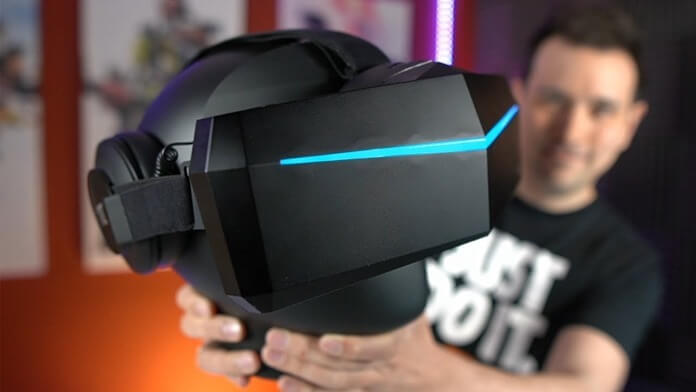
- purpose: for PC
- refresh rate 120 Hz
- interpupillary distance adjustment
- 3.5mm jack
New for 2020 looks very stylish and futuristic, so it is easy to feel like a superhero saving a parallel universe. It belongs to the budget Artisan line, and for a relatively low price it offers the following features:
- resolution 1700 × 1440 per eye,
- viewing angle diagonally 170 degrees, horizontally 140 degrees,
- refresh rate from 72 to 120 Hz,
- support for 360-degree content,
- Steam VR 2.0 and 1.0 support,
- matrix response time less than 10 ms,
- microphone,
- optional eye tracking module.
The developers recommend this VR headset "in pair" for computers with a GeForce GTX 1050 Ti / 1060 graphics card installed.
pros: price, design, refresh rate.
Minuses: no controllers included.
8. Samsung HMD Odyssey
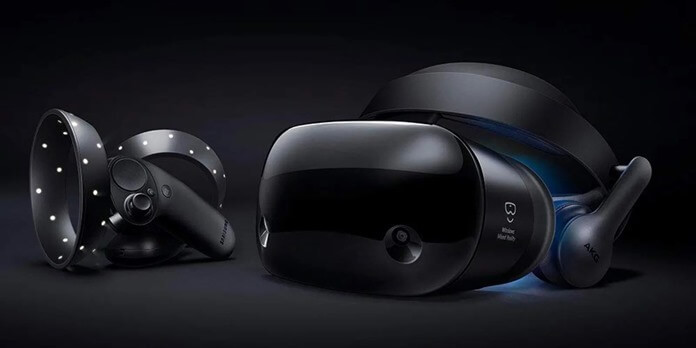
- purpose: for PC
- total resolution: 2880 × 1600 / per eye: 1440 × 1600
- refresh rate 90 Hz
- viewing angle 110 °
- Windows Mixed Reality
- interpupillary distance adjustment
- built-in headphones
- motion controller included
These glasses are built on the Windows Mixed Reality platform, so you can't do without Windows 10 on your PC. This is explained by the fact that Samsung was one of the last to join the VR feast.
The Odyssey has everything you need to fully immerse yourself in virtual reality: built-in headphones, two controllers and very good visual characteristics, practically not inferior to the market flagships - Oculus Rift and HTC Vive Pro. Another plus - there are no external sensors, so you don't have to fool around with their installation and connection.
pros: build quality and materials, price / quality ratio, great image, bright colors.
Minuses: boring design, heating of the inner screen, no ventilation, no replaceable pads, heavy.
7. Bobovr Z6
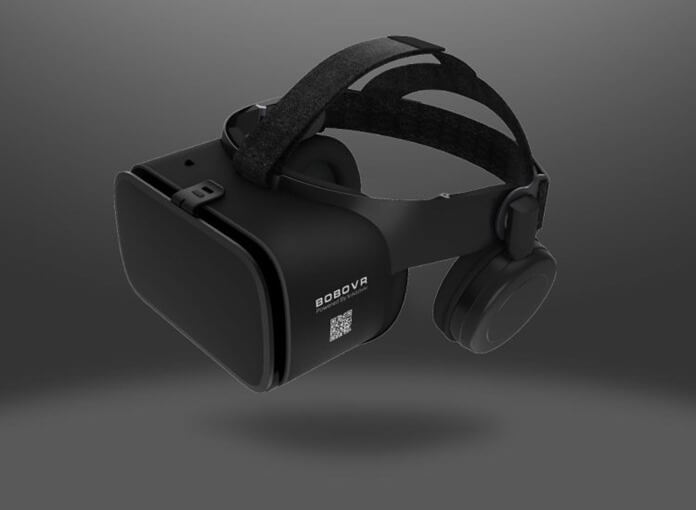
- purpose: for smartphones
- compatibility: Android, iOS
- viewing angle 110 °
- built-in headphones
When you are thinking about which virtual reality glasses are better to buy for a smartphone, pay attention to this model, which strikes with gorgeous viewing angles - 110 °.
When folded, the device weighs only 420 g, so you can carry it with you everywhere. And with the battery life of the Bobovr Z6, everything is fine - at least a day. This model has a micro USB connector, plus a touch button with which you can control applications and play games.
pros: build quality and materials, comfortable, quick connection, good sound, presence of a touch button.
Minuses: Insufficient depth of focus for nearsighted people, blurred edges.
6.HTC Vive Pro Full Kit
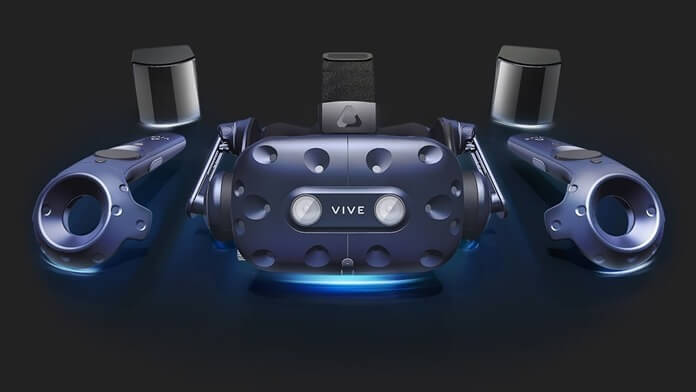
- purpose: for PC
- total resolution: 2880 × 1600 / per eye: 1440 × 1600
- refresh rate 90 Hz
- viewing angle 110 °
- interpupillary distance adjustment
- built-in headphones
- motion controller included
This is an improved version of Vive VR, or rather, even more like a remaster. Engineers and marketers at HTC and Valve studied user feedback and designed the new model with them in mind. Well, as new - at the moment Vive Pro has been on the market for two years.
If you have the money and a good PC, the Vive Pro is a pretty good option. The glasses have a higher resolution than the market average, a good refresh rate, and games in them from the category "beautiful" go to "just super". And the change in the distribution of the load on the head and the appearance of built-in headphones allow you to immerse yourself in the atmosphere of a fictional world completely.
True, this dive will cost a lot. Despite the release date, the full Vive Pro kit, including all sensors and controllers, costs about 100 thousand rubles.
pros: picture, comfort, no ripples and dizziness, the interpupillary distance can be adjusted.
Minuses: price.
5. Oculus Go
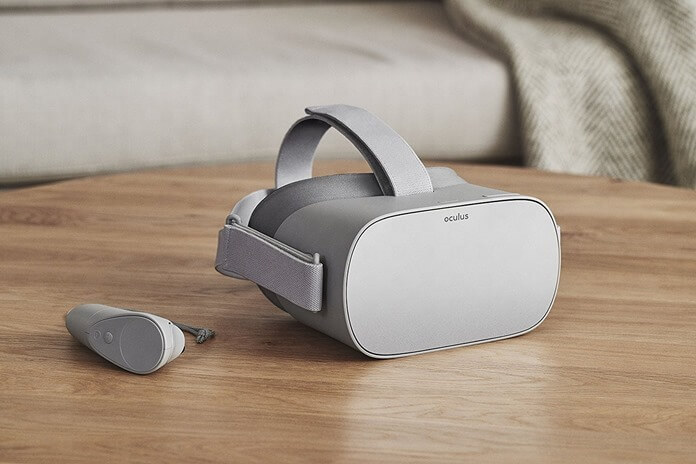
- purpose: independent device
- total resolution: 2560 × 1440 / per eye: 1280 × 1440
- refresh rate 72 Hz
- viewing angle 100 °
- built-in headphones, 3.5 mm jack
The old horse does not spoil the furrow, and Oculus Go still enjoys well-deserved popularity among fans of virtual reality. These are some of the most comfortable VR headsets on the market, plus the longer it takes from their release date, the cheaper they get. Without losing quality.
And the display and speakers are still excellent (especially considering it's a mid-range device)
pros: price-quality ratio.
Minuses: small battery, warming up, interpupillary distance cannot be adjusted.
4. Homido Mini
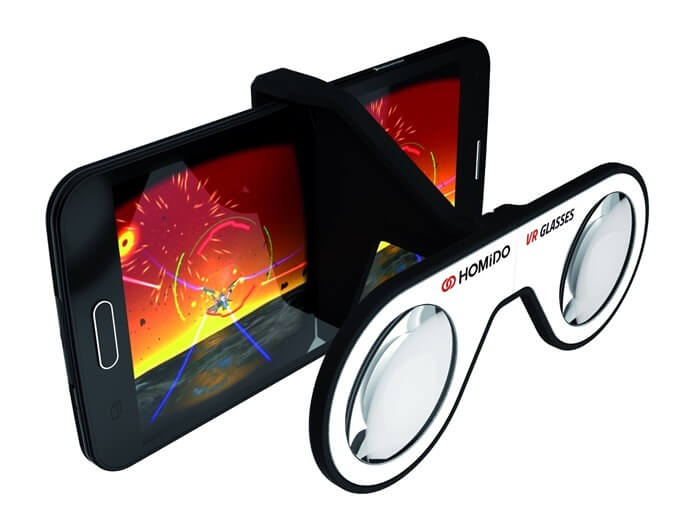
- purpose: for smartphones
- compatibility: Android, iOS
- viewing angle 100 °
A very simple and elegant solution for those who hate wearing a bulky headset to enjoy virtual reality. The Homido Mini are small and lightweight glasses that fit almost any smartphone. Not only will they take up even less space in your bag, the creators have made them foldable. And the lenses will be kept intact by a special case.
Another plus of the Homido Mini is that they allow the owner to work with the screen without interference, so that even while viewing, you can switch applications and operate the menu without interference. Well, de facto, these are the cheapest virtual reality glasses from the rating.
In general, this is a great option for a gift for a child or for getting started with virtual reality.
pros: weight, size, price.
Minuses: Not compatible with all smartphones in size and resolution.
3. Oculus Rift S

- purpose: for PC
- General resolution: 2560 × 1440
- refresh rate 80 Hz
- 3.5mm jack
- motion controller included
While the Rift S is a newer model in the Rift line, it sells for the same price as its predecessor. And although in many aspects it can be safely called progressive, however, alas, not in all. For some reason, the manufacturer decided to lower the refresh rate of the screen and replaced the OLED lenses with LCD.
But not everything is so bad, since the "C" version is distinguished by tracking inside-out. This means that you do not need to buy and then install external sensors in your apartment, or you can do without this hassle altogether.
So if you have a good gaming computer, and you want to buy a headset in addition to it, then it is clear which VR glasses to choose. The Oculus Rift S is currently one of the best wired VR headsets for the mid-sized consumer. Plus the Rift S has its own extensive library of games.
pros: Inside-out tracking, average computer requirements, easy to set up.
Minuses: fixed interpupillary distance.
2. PlayStation VR
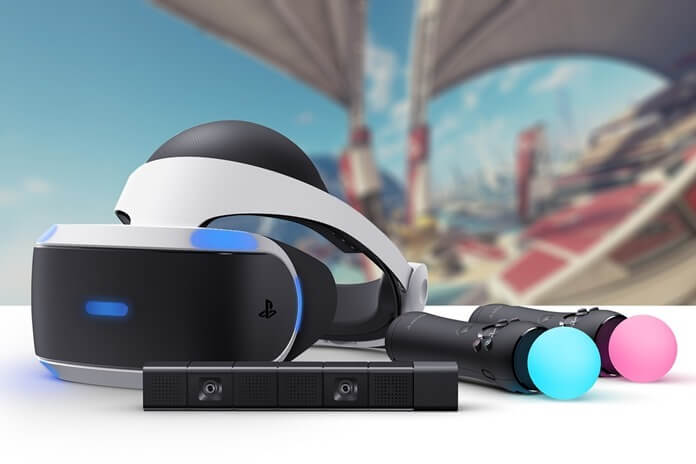
- purpose: for consoles
- compatibility: PS4
- total resolution: 1920 × 1080 / per eye: 960 × 1080
- refresh rate 120 Hz
- viewing angle 100 °
- headphones included, 3.5 mm jack
Fans of console games also want complete immersion in a fictional world, and especially for them, Sony engineers have come up with high-quality and comfortable VR glasses. And even though there is a tangible difference between mid-range and high-end PCs and the current most popular PS4 console, PlayStation VR glasses are very good. They have excellent refresh rates, plus Sony has amassed a large library of VR-ready games, so console gamers won't be bored with glasses.
The main complaint about the previous version from the PlayStation is that accessories had to be bought separately - Sony's marketers decided that a large number of kits with a variety of options are available for the buyer's choice. Just make sure that they contain PlayStation Move controllers - for some reason they are not in every kit.
pros: futuristic design, convenience, low (compared to other members of this collection) price.
Minuses: not suitable for watching movies, playing a lot can make you dizzy.
1. Oculus Quest
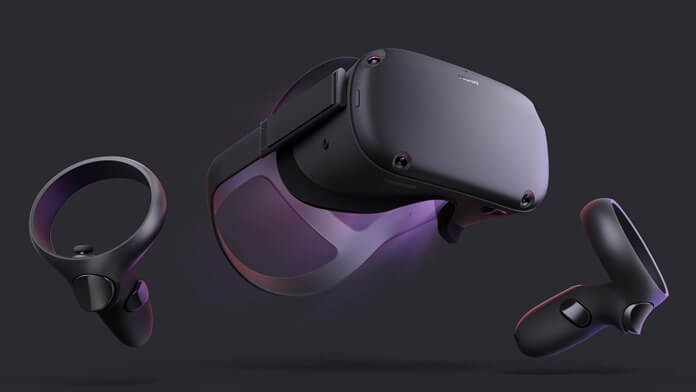
- purpose: independent device
- total resolution: 3200 × 1440 / per eye: 1600 × 1440
- refresh rate 72 Hz
- viewing angle 100 °
- interpupillary distance adjustment
- 3.5mm jack
- motion controller included
Oculus Quest became the leader among the rating of virtual reality glasses in 2020. It is completely autonomous, which means that you do not need a computer or cables from it to immerse yourself in virtual reality. Wearing glasses, you will feel how attractive the idea of unlimited movement and action in the virtual space.
The device is lightweight, weighs only 571 g, it does not need sensors or other components that reduce freedom of movement. Although if you really want, you can "tie" these glasses to the computer. So far, this functionality is in beta stage, but it is already working well. To do this, you can buy your own cable from Oculus or get by with a good USB 3.0.
pros: autonomy, productivity, smart interface and excellent tutorial.
Minuses: Difficulty connecting Bluetooth devices, including headphones.

